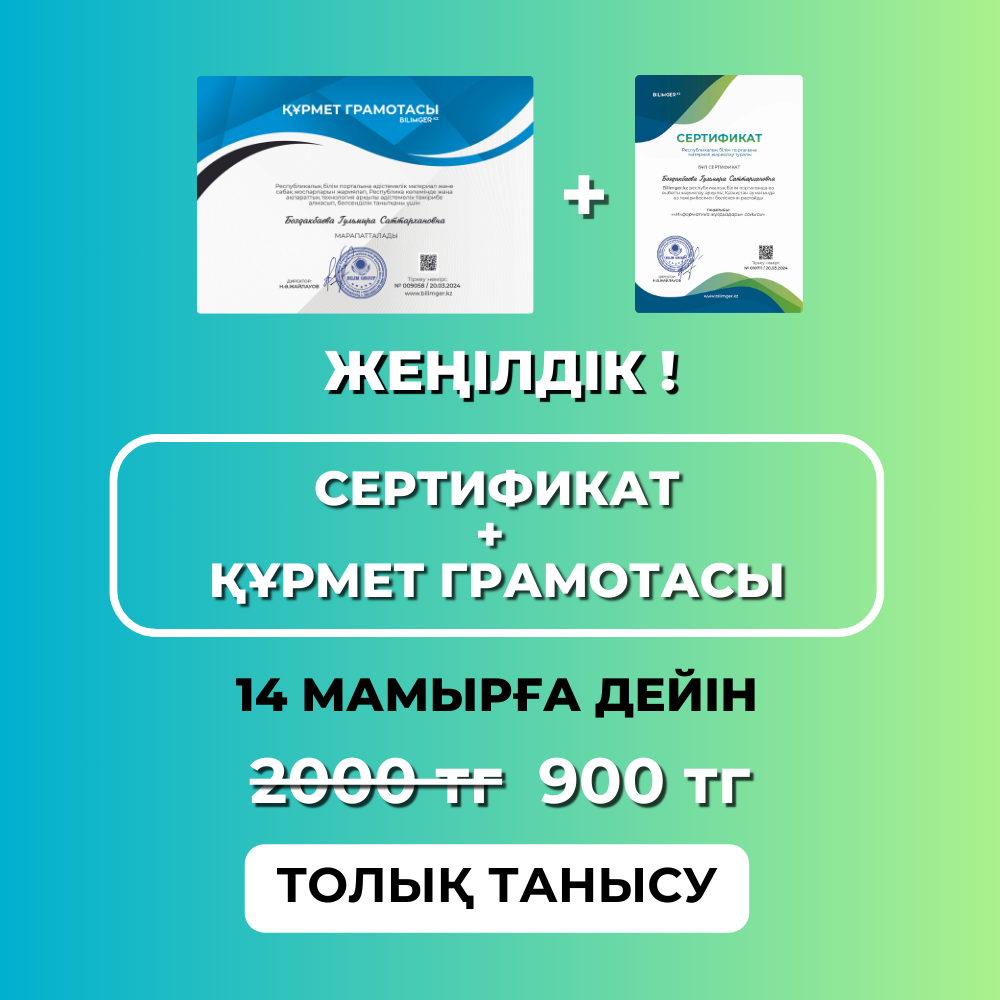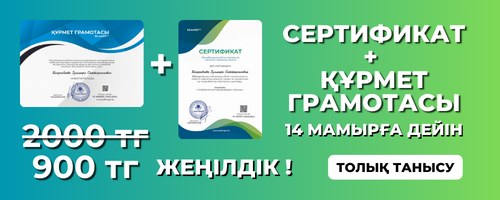Grade 5. Unit2. Living things. Plants2.
Kyzylorda region, Aral district School – lyceum № 14 named after N. K. Krupskaya English teacher Nurmanova Nurgul
| Unit 2 Living things | School: №14 | ||||
| Date:26.07.2019 | Teacher name: Nurmanova N.S. | ||||
| CLASS: 5G | Number present: 12 | absent: — | |||
| Lesson title | Plants 2 | ||||
| Learning objectives(s) that this lesson is contributing to (link to the Subject programme) | 5.2.3.1.understand an increasing range of unsupported basic questions on general and curricular topics
5.5.3.1.write with support factual descriptions at text level which describe people, places and objects 5.6.3.1.use a growing variety of adjectives and regular and irregular comparative and superlative adjectives on a limited range of familiar general and curricular topics |
||||
| Lesson objectives | All learners willable to:
· Read aboutthe parts of plants · Discuss the text in a group · Spell new vocabulary words correctly Most learners will able to: · Write sentences on comparative adjectives · Ask and answer the questions with support Some learners will be able to: · Replenish comparative tables independently · Do creative work using the text |
||||
| Assessment criteria | • Recognise basic general questions without support
• Use the information to write sentences which describe people, places and objects • Apply the rule for comparative and superlative adjectives |
||||
| Values links | Involvement of children in cooperation with group work
Work experience through practice |
||||
| Cross-curricular
links |
Biology – know parts of plants
Technology – they make leaves and roots cutting the paper |
||||
| ICT skills | Do work with ready electronic text | ||||
| Previous learning | 5 grade Unit 2.Living things.Plants 1.
Students were familiarized with plants from previous lesson. In this lesson they will know about plant parts and growing |
||||
| Plan | |||||
| Planned timings | Planned activities (replace the notes below with your planned activities) | Resources | |||
| Start
2 min
5 min
Middle 6 min
6 min
4 min
6 min
9 min
|
Class organization.
-Good morning children! -Good morning teacher! -How are you? Are you ok today? -We are super, thank you. And you? -I’m great! Thanks, sit down. Let’s start our lesson.
Learning and lesson objectives are introduced. Ok, children, today wewill talk about parts of plants and spell some new words.Pre-learning Under your desk there are attached new words, please take them and read louder: Seed Leaf Rain Stem Root Tree Sunlight Plant
Assessment: very good job, shows thumb. Ok, children look at the blackboard there are pictures of these words. The teacher explains their meaning and shows pictures. For example: Teacher shows drawing roots and says: “This is root” etc. Fixing new words Before the assignment, the teacher gives them flash cards with pictures. Teacher prepares pictures and glue for the task.
Task 1. Individual work. Put the pictures above the words
Ok, children if you have finished swap with your classmates and verity your answers. Then the teacher asks one studentto read out loud if the correct answer assessed him to a smile.It goes on until they have read. Defferentiation: by support: learners can find and check their work using internet. Listeninig. Pre-listeningteacher asks the learners to remember unfamiliar words in this movie and to ask the group mates about the unfamiliar words. If learners cannot find the meanings or translations of the words teacher provides the meaning of the words. (Teacher’s support) Assessment: check each other’s answers if the answer is correct draw a star. Task 2. Pair work. Discuss each other and answer the questions. 1. Do you like plants? 2. What is your favorite plant? 3. Do you grow a plant in your house? 4. Have you set plants? Discriptor: 1. Read the questions. 2. Discuss with each other. 3. Answer the questions 4. Report to a teacher.
Differentiation: Learners are divided into pairs (The teacher makes sure that the strong learners sat down with the weak, this will help them easily to translate or understand the meaning of words) share their opinions and answer the question. Differentiation by support. Assessment: teacher gives a multi-colored felt pen as a reward Physical exercise. The teacher asks the students to stand up and walk around the class, then the teacher explains the rules: when I say “leaves” you should stop.When I say “Tree” you should go around. When I say “Root” you should clap your hands. When I say “Seed” you should jump. Start: teacher says the words and learners follow the rules. Skill: Use of English and writing Teacher divides them into groups: Pictures with trees – sits together Picture with seeds – sit another place Pictures with roots – sits together Task 3. Group work. Now children who tell me what are adjectives? When I say “adjectives” what comes in your mind? Learners say possible answers. If they have forgotten teacher will remind them. Teacher checking their previous learning about adjectives.Teacher takes the example of a plant from the class and shows it : This flower is bigger than this one OR this flower smaller than this one. Ok children, now let’s get down to the task 1. Gaukhar is _______ than Aybek. (tall) 2. Car is _________ than bus. (small) 3. Train is ________ than car. (big) 4. The dog is __________ than cat. (fast) 5. My hair is __________ than yours. (long) Differentiation: more able learners can help to peers. Assessment: gives a smile stickers Practice work. Now children let’s be a little gardener and plant a plant with our own hands.Before learners begin to practice, the teacher must prepare the necessary things: plastic cup, sand, water and seeds of plant. And now children take the glass and put some sand in there, but be careful not to get dirty. Then make a small dimple and put the seed in there. And finally bury with sand and pour water.So we planted on our own plant. Take your plants home and grow them. I hope by next year you will have a big plant.Excellent work! I am proud of you. The lesson is over goodbye children! |
PPT slide
Some parts are changed
http://learnenglishkids.britishcouncil.org/en/short-stories/the-lucky-seed
|
|||||||||||||||||||||||||||||||||||||
| End
2min |
Reflection(W) Teacher asks learners:
— What has been learned? — What remained unclear? — What is necessary to work on Home task: Learn new words |
||||||||||||||||||||||||||||||||||||||
| Additional information | |||||||||||||||||||||||||||||||||||||||
| Differentiation – how do you plan to give more support? How do you plan to challenge the more able learners?
Differentiation bysupport and by resources. Through outcomes, depending on the abilities. Differentiation by support if the learners don’t understand meaning of words in task №1 teacher helps them.
|
Assessment – how are you planning to check learners’ learning?
Assessing by giving smile stickers task №3 Showing with thumbtask № 1 |
Health and safety check
Walk-stop exercise
At the beginning of the lesson safety class rules were discussed. |
|||||||||||||||||||||||||||||||||||||
| Differentiationcan be achievedthroughtheselectionofactivities, identification of learning outcomes for a certain student, provision of individual support to learners, selection of learning materials and resources based on the individual abilities of leaners (Theory of Multiple Intelligences by Gardner). | Use this section to record the techniques that you will use to assess what the learners have learned during the lesson. | Health saving technologies.
Using physical exercises and active activities. Rules from the Safety Rules book which can be applied in this lesson. |
|||||||||||||||||||||||||||||||||||||
| Reflection
Were the lesson objectives/learning objectives realistic? Did all the learners achieve the lesson objectives/ learning objectives? If not, why? Did my planned differentiation work well? Did I stick to timings? What changes did I make from my plan and why?
|
Use the space below to reflect on your lesson. Answer the most relevant questions from the box on the left about your lesson. | ||||||||||||||||||||||||||||||||||||||
| Summary evaluation
What two things went really well (consider both teaching and learning)?
1:
2:
What two things would have improved the lesson (consider both teaching and learning)?
1:
2:
What have I learned from this lesson about the class orindividuals that will inform my next lesson?
|
|||||||||||||||||||||||||||||||||||||||





